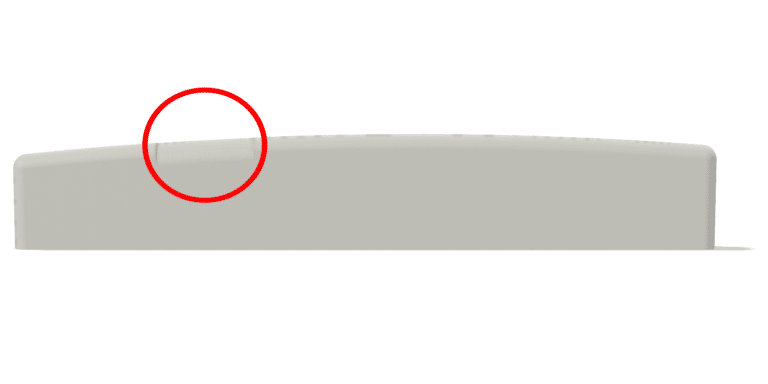Find the Right Saddle Size for Your Recording King® Acoustic Guitar
Do you need of a Recording King steel string acoustic guitar saddle? The Recording King brand first appeared in the 1930s, and then returned in 2007. This guide is only for guitars built during or after 2007. There’s no single saddle that fits all guitar types, and this can make finding the correct saddle for your specific guitar difficult.
This article provides tips on finding the correct saddle for your Recording King steel string acoustic guitar, but we suggest that you also measure your guitar’s saddle slot for a proper fit as every guitar is slightly different. If you are not the original owner, at some point someone may have installed a different saddle or have adjusted the saddle slot, producing different specs from the factory’s.
Step One: Determine Saddle Compensation Pattern
There is no single compensation pattern used on Recording King models, but there are two common types seen: B compensated, and B compensated with slanted bass. Below is a description of each.
Center Line B Compensated
Recording King models often use saddles that at first glance appear to be center line non-compensated, but if you look closely, actually have a subtle B compensation as shown in the below image.

These saddles are often around 73 to 74 mm long, 8 to 10 mm maximum height, and around 2.5 to 3.0 mm thick. Please measure your current saddle and saddle slot to determine the size your guitar needs.
These saddles are similar in length/thickness/height to Martin style wave compensated saddles, and we’ve adjusted Martin style wave saddles for Recording King models.
However, before putting a Martin style wave saddle on your Recording King, please check your saddle’s thickness, as it may be thicker than the common 2.5 mm thickness often used on Martins.
Additionally, check your Recording King’s intonation and determine how a Martin wave style saddle would affect this. Compared to the Recording King B compensated saddle, the Martin style saddle will have the treble E and B strings in a similar location. However, the Martin style saddle will move the G, D, A strings forward, and the bass E backward as shown in the below images. Please see the below images, which show saddle slot angles of three degrees. The blue line shows the approximate location of where each string would sit.


B Compensated with Slanted Bass
Another common saddle type found on Recording King models, particularly the Dirty 30s models, is B compensated with slanted bass. Please note that Dirty 30s models will have other saddle types, though, so please check your guitar’s saddle. This saddle type contain has a step for the B string, and moves progressively backward for the wound strings. These saddle types are often around 72 mm long, 3.2 mm thick, and around 9 to 10 mm tall, but check your saddle for specs.

Step Two: Determine Fretboard Radius
We’ve seen reports of Recording King models with either 12 or 16 inch fretboard radius. We advise that you confirm by contacting Recording King with your serial number. You can also print out radius gauges or purchase machined gauges.
Which Saddle Does Your Recording King Need?
Still wondering which saddle your Recording King needs? Please contact us with all of the below information.
- Fretboard Radius – Confirm by contacting Recording King with your serial number
- Current Saddle Length, Maximum Height, Thickness – Must be measured with a caliper
- Bass to Treble Edge Height Difference
- Guitar Saddle Slot Length, Thickness (if different from saddle specs) – Must be meausured with a caliper
- Guitar string spacing at the bridge
- Current Saddle Compensation Pattern (Please send a picture if you are not sure which type you have)
We will respond within 48 hours.
